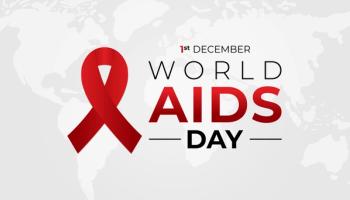
Financial Barriers to PrEP Remain But They Are Lower
CDC researchers estimate an almost 50% decrease in those with uncovered costs associated with HIV preexposure prophylaxis (PrEP). More people who are PrEP eligible have insurance and the cost of PrEP has declined.
About 1.2 million people in the U.S. are considered eligible for HIV preexposure prophylaxis, or PrEP (pronounced prep), which involves taking antiviral medication on a preventive basis. People who are candidates for PrEP include those who are HIV negative who have sexual partner with HIV and those who have anal or vaginal sex without using a condom on consistent basis. According to the Centers for Disease Control and Prevention (CDC)only about 30% of people who have PrEP “indications” have been prescribed PrEP. The federal government’s goal is to make that 50% by 2025, a threshold health officials set as part of the larger goal of reducing new infections by 90% by 2030.
There are many reasons for gap between PrEP eligibility and PrEP prescriptions and use, but cost is among them. A 2015 study found that approximately 90,000 of the people in the U.S. faced PrEP costs that weren’t covered by insurance, which worked out to be about 8% of the population that had PrEP indications.
Since then, the U.S. Preventive Services Task Force gave PrEP an A recommendation, which under the Affordable Care Act (ACA) triggers coverage with no cost sharing by most private insurers ad Medicaid expansion programs. Several states have expanded their Medicaid coverage under the ACA and some state and federal programs specifically support PrEP have started.
In light of these development,
Their
The total annual uncovered costs also decreased by about 50%, from $208 million to $102 million. Their calculations are based, in part, on an estimate that 1% of those with insurance coverage would have a PrEP prescription denied by their insurer because of insurance policies or administrative error. This is just an estimate, though, as they say in discussing the limitations of their research and “the frequency at which this occurs is not well described.”
Of the estimated 49,860 with uncovered costs, the researchers figure that just 6% (or 3,160) had uncovered costs for PrEP medication and clinical care, which includes office visits and lab tests. Because of manufacturer’s medication assistance programs, vast majority (94%, or 46,700 people) of those had uncovered costs for clinical care only, which they estimated ranged from $671 annually for heterosexual men and women to $1,458 for men who have sex with men (MSM).
Bonacci and his colleagues offered a number of explanation for the decrease in the number of people with uncovered PrEP from the 2015 study and theirs. A smaller number of people in each “transmission group” were uninsured with the largest gain in the insured population being among MSM. The price of PrEP has dropped significantly, they noted. In 2015, when Truvada (tenofovir disoproxil fumarate and emtricitabine) was the only PrEP medication on the market, the annual cost was $10,770. Using a weighted average of prices of Truvada, Descovy (tenofovir alafenamide and emtricitabine) and the generic versions of Truvada, they estimated the annual cost is $4,196.
Bonacci and his colleagues cautioned that “significant racial, ethnic and geographic equities inPrEP use persist throughout the U.S. Overcoming barriers to PrEP, among them being financial barriers, remains essential to increasing PrEP use equitably for communities disproportionately affected by HIV infection.”
Newsletter
Get the latest industry news, event updates, and more from Managed healthcare Executive.






















































